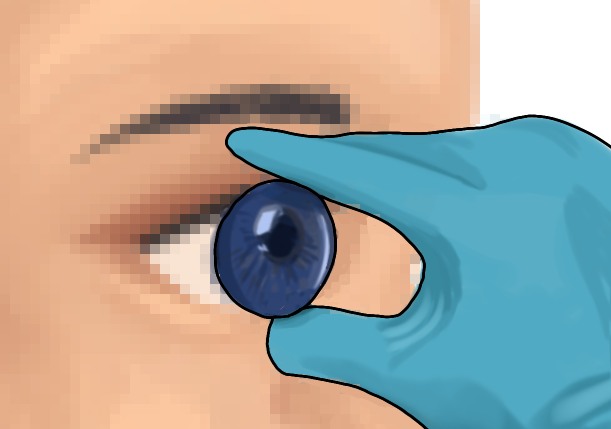
By Caroline Mora
In May of 2023, surgeons at New York University performed a face transplant and eye transplant on Arkansas resident Aaron James, making him the first person to receive this surgery and the nineteenth person to receive a facial transplant.
James had experienced a traumatic accident involving high-voltage power lines that left him without his left arm, and his left eye and with an incredibly scarred face. He lost most of his facial features including his nose and parts of his mouth, requiring him to use feeding and breathing tubes.
Even if James’ surgery doesn’t yield the results that the surgeons hope for, anything they can learn from James can be considered to help the next person. Ophthalmologists have been studying eye replacements using animals, and according to Dr. Jeffery Goldberg, the Chair of Ophthalmologists at Stanford University, “We’re really on the precipice of being able to do this.”
Cornea replacements aren’t an uncommon procedure to treat vision loss; however, this is the first time a person has received an entire eye transplant. This includes the eyeball itself, the optic nerve and the blood supply to the eye. If James can regrow the optic nerve after the surgery, chances are, he will be able to see again.
Throughout the 21-hour surgery, the ophthalmologists decided they would connect James’ optic nerve with the donated nerve. The optic nerve is responsible for sending electrical impulses from your eyes to your brain. The brain will then interpret the impulses and turn them into visual images. After connecting the two nerves, they injected stem cells in hopes that they would induce cell regeneration and overall growth.
A recent checkup revealed that James has a sensation around his eye, which is promising, as well as small muscle contractions.
“It feels good,” James told the Associated Post. “I still don’t have any movement in [my eyelid] yet … I can’t blink yet. But I’m getting sensation now.”
He also has plenty of photoreceptors, which doctors were unsure would remain undamaged. They’re responsible for converting light into electrical impulses, and they’re critically needed for us to see.
The doctors also believed that there was a good chance that James’ new eye would shrivel and his body would reject it. However, the blood supply to his eye is plentiful, and has plenty of fluid.
MRIs and other tests have given the doctors results that they don’t quite know what to do with. James’ optic nerve hasn’t healed; however, there is still activity in the brain in places that should be dark at this stage.
This surgery has opened up so many new questions, and both James and his surgeons are hopeful that the answers to these questions will help make eye transplants more successful in the future.





